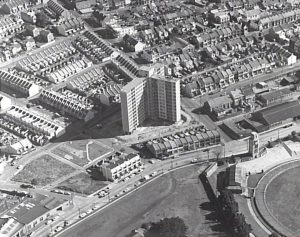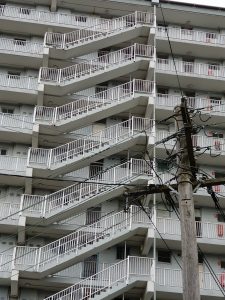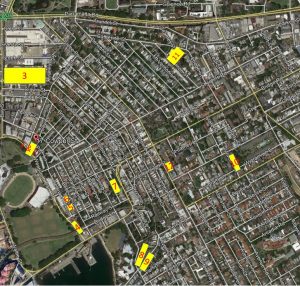Ian Stephenson, Planning Convenor, Glebe Society Bulletin May 2021
In the April 2021 Bulletin I reported on Sydney City Council’s removal of two properties in Cowper St from the St Phillips Heritage Conservation Area in order to facilitate a future development application by the NSW Land and Housing Corporation (LAHC) to demolish 1980s infill housing and replace it with two eight-storey apartment buildings.
LAHC are well advanced with plans for another rezoning to allow high rise, this time in Franklyn St, Glebe. This is to demolish low rise infill designed by Phillip Cox in the 1980s and to replace it with towers as high as 14 storeys (see the March Bulletin for more information). Nearly 40% of the site is currently gardens, but these are to be replaced by ‘living’ roads – so much for greening Sydney!
Understandably the residents of Franklyn St are extremely upset as they will lose their homes and if they are eventually permitted to return it will be to the alienating environment of small apartments without easy access to gardens.
Jan Gehl, the Danish urban designer advises that:
High-rises separate people from the street. Meaningful contact with ground level events is possible only from the first few floors in a multi-storey building. Between the third and fourth floors, a marked decrease in the ability to have contact with the ground level can be observed. Another threshold exists between the fifth and sixth floors. Anything and anyone above the fifth floor is definitely out of touch with ground level events.
The neighbours of adjoining properties in Glebe St and Greek St are also very concerned, particularly about the loss of sunlight in their homes. However, it is a whole of Glebe issue which every Glebe resident needs to think about.
In Glebe in the 1980s the NSW Housing Commission architects were ahead of their time, they got it right in designing low rise infill with private and public open space and inserting it skilfully into historic neighbourhoods. This reversed the planning philosophy of the 1950s which in 1959 saw the 11-storey John Byrne Court erected in St Johns Rd.
In Macquarie St in 2021 our State government is getting it seriously wrong by doing high rise developments in heritage conservation areas. No private developer can get away with this.


For Glebe this ‘back-to-the-50s’ approach may well be only the beginning. There appear to be 10 other LAHC sites in Glebe (it’s hard-to-get information on what they own and what they have sold) which, although located in or near heritage conservation areas, are classed as either Neutral or Detracting and are large enough for high rise. LAHC might be intending to follow the same path at Cowper St which is to apply for a spot rezoning to remove the sites from the HCAs and have new controls to permit greater height and density.
This would be the end of two things which make Glebe a great place to live and are embedded in its culture. That is the survival of its late 19th century scale and its broad demographic – rich, poor and everything in between, sharing a low-rise suburb. This diversity goes back to the 1840s when the Bishopsgate estate off Bay St was for the battlers and Glebe Point for the toffs. It could mark the beginning of a suburb of two citizens – the private owners in houses and the social housing tenants in high rise. Let’s not see that happen.
Join our compatriot organisations Hands Off Glebe, Friends of Erskineville and Shelter NSW and attend the rally at midday 12 May at the Macquarie St end of Martin Place. Do it for Glebe.











There are no comments yet. Please leave yours.